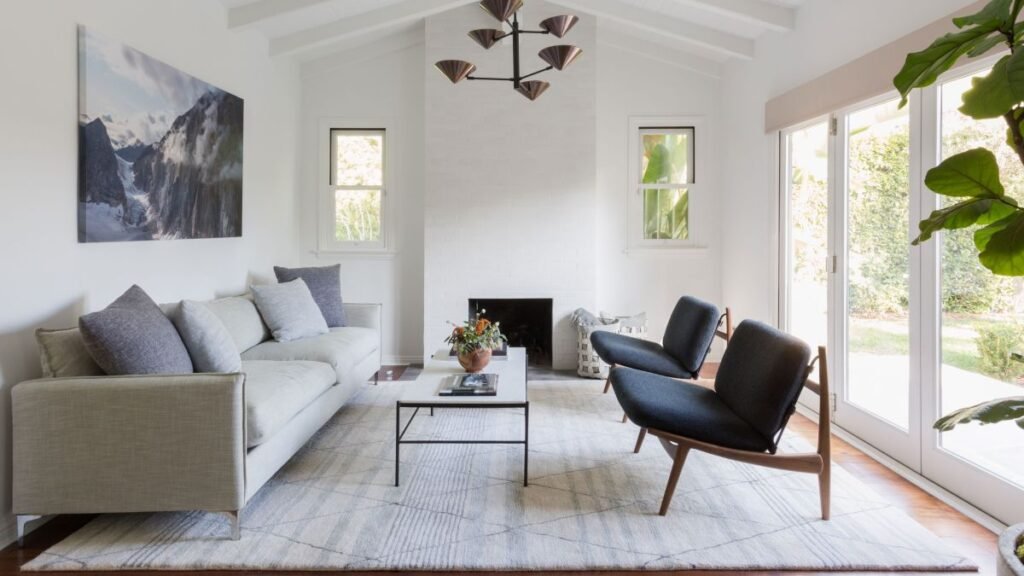Your basket is currently empty!
Scandinavian Simplicity: Embracing Nordic Design Principles
Scandinavian design has captured the hearts of design enthusiasts worldwide with its minimalist aesthetic, clean lines, and emphasis on functionality. Rooted in the Nordic region, this design style embraces simplicity, natural elements, and a harmonious balance of form and function. This article explores the principles of Scandinavian design and how they can be embraced to create serene and inviting living spaces. By incorporating Nordic design principles, designers can bring a sense of calm, warmth, and timeless elegance into homes.

Minimalism and Simplicity: Less is More
At the core of Scandinavian design is the principle of minimalism and simplicity. This design philosophy advocates for the removal of unnecessary clutter, focusing on essential elements that contribute to the overall aesthetic and functionality of a space. Clean lines, uncluttered surfaces, and a neutral color palette create a sense of calm and visual harmony. By embracing simplicity, designers can create spaces that feel light, airy, and uncluttered, promoting a sense of tranquility and well-being.
Natural Materials: Connecting with Nature
Scandinavian design celebrates the use of natural materials, bringing a sense of warmth and connection to nature into interior spaces. Wood, particularly light-toned varieties such as birch or pine, is commonly used for flooring, furniture, and cabinetry. Other natural materials like leather, wool, and linen add texture and tactile comfort to the design. By incorporating natural materials, designers can create a sense of authenticity and organic beauty within the space, enhancing the overall ambiance.
Functional Design: Balancing Form and Function
Scandinavian design places a strong emphasis on functionality, where every design element serves a purpose. Furniture and decor items are not only visually appealing but also designed to be practical and user-friendly. Streamlined storage solutions, modular furniture, and multi-purpose pieces optimize space utilization and adaptability. By prioritizing functionality, designers can create spaces that are efficient, organized, and seamlessly integrate into the daily lives of the occupants.
Light and Airy Interiors: Maximizing Natural Light
Scandinavian countries are known for their long, dark winters, which have influenced the design approach to maximize natural light. Scandinavian design incorporates large windows, light-colored walls, and minimal window treatments to allow ample natural light to fill the space. This emphasis on natural light creates bright and uplifting interiors, making the most of daylight hours and enhancing the overall sense of well-being. By embracing light and airy interiors, designers can create spaces that feel open, inviting, and connected to the outdoors.
Cozy Textures and Warmth: Embracing Hygge
Scandinavian design embraces the concept of “hygge” – a feeling of coziness, comfort, and well-being. Soft textures, such as plush rugs, faux fur throws, and knitted blankets, add warmth and tactile comfort to the space. Candlelight and soft, diffused lighting create a cozy atmosphere during the darker months. By incorporating cozy textures and warmth, designers can create spaces that invite relaxation, intimacy, and a sense of contentment.
Scandinavian design principles offer a timeless and serene approach to creating inviting living spaces. By embracing minimalism and simplicity, incorporating natural materials, prioritizing functionality, maximizing natural light, and embracing cozy textures and warmth, designers can infuse homes with the beauty and tranquility of Nordic design. Scandinavian design promotes a sense of calm, harmony, and well-being, providing a sanctuary from the demands of modern life. By embracing the essence of Scandinavian simplicity, designers can create spaces that stand the test of time and bring a sense of peaceful elegance into the lives of the occupants.
Leave a Reply